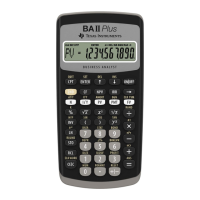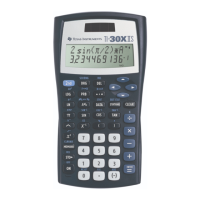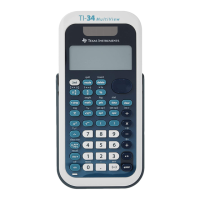796 Appendix A: Functions and Instructions
cosh() MATH/Hyperbolic menu
cosh(
expression1
) ⇒
⇒⇒
⇒
expression
cosh(
list1
) ⇒
⇒⇒
⇒
list
cosh (
expression1
) returns the hyperbolic cosine
of the argument as an expression.
cosh (
list1
) returns a list of the hyperbolic cosines
of each element of
list1
.
cosh(1.2) ¸ 1.810...
cosh({0,1.2})
¸ {1 1.810...}
cosh(
squareMatrix1
) ⇒
⇒⇒
⇒
squareMatrix
Returns the matrix hyperbolic cosine of
squareMatrix1
. This is
not
the same as calculating
the hyperbolic cosine of each element. For
information about the calculation method, refer
to
cos().
squareMatrix1
must be diagonalizable. The result
always contains floating-point numbers.
In Radian angle mode:
cosh([1,5,3;4,2,1;6,ë 2,1])
¸
421.255 253.909 216.905
327.635 255.301 202.958
226.297 216.623 167.628
coshê () MATH/Hyperbolic menu
coshê (
expression1
) ⇒
⇒⇒
⇒
expression
coshê (
list1
) ⇒
⇒⇒
⇒
list
coshê (
expression1
) returns the inverse hyperbolic
cosine of the argument as an expression.
coshê (
list1
) returns a list of the inverse
hyperbolic cosines of each element of
list1
.
coshê (1) ¸ 0
coshê ({1,2.1,3})
¸
{0 1.372... coshê (3)}
coshê(
squareMatrix1
) ⇒
⇒⇒
⇒
squareMatrix
Returns the matrix inverse hyperbolic cosine of
squareMatrix1
. This is
not
the same as calculating
the inverse hyperbolic cosine of each element. For
information about the calculation method, refer
to
cos().
squareMatrix1
must be diagonalizable. The result
always contains floating-point numbers.
In Radian angle mode and Rectangular complex
format mode:
coshê([1,5,3;4,2,1;6,ë 2,1]) ¸
cot() MATH/Trig menu
cot(
expression1
) ⇒
expression
cot(
list1
) ⇒
list
Returns the cotangent of
expression1
or returns a
list of the cotangents of all elements in
list1
.
Note: The result is returned as a degree, gradian
or radian angle, according to the current angle
mode setting.
In Degree angle mode:
cot(45) ¸ 1
In Gradian angle mode:
cot(50) ¸ 1
In Radian angle mode:
cot({1,2.1,3}) ¸
{
1
tan(1)
L.584…
1
tan(3)
}
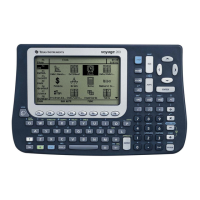
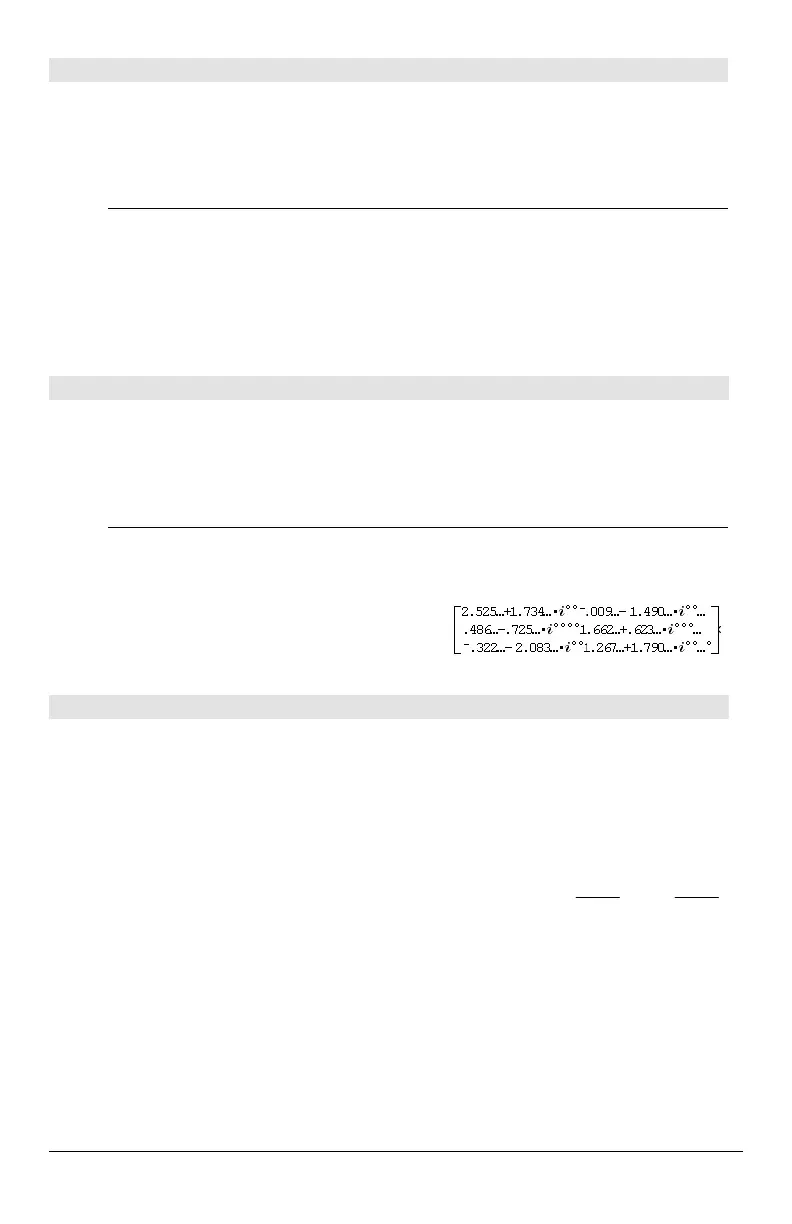